Two solid years of work on understanding how hillfort gates worked! Here’s a  https://abs.twimg.com/emoji/v2/... draggable="false" alt="🧵" title="Thread" aria-label="Emoji: Thread"> on the new paper by me, @rgsm84 @DrDerekHamilton Dr Eddie Rule & @johnswogger. Funded by @LivUni, @Go_CheshireWest, @HistoricEngland. What did these ‘lost’ iron objects tell us about the Iron Age? 1/ https://twitter.com/archaeologicalj/status/1301856036614295557">https://twitter.com/archaeolo...
https://abs.twimg.com/emoji/v2/... draggable="false" alt="🧵" title="Thread" aria-label="Emoji: Thread"> on the new paper by me, @rgsm84 @DrDerekHamilton Dr Eddie Rule & @johnswogger. Funded by @LivUni, @Go_CheshireWest, @HistoricEngland. What did these ‘lost’ iron objects tell us about the Iron Age? 1/ https://twitter.com/archaeologicalj/status/1301856036614295557">https://twitter.com/archaeolo...
In 1936-37, the iron objects were excavated by Bill Varley of @LivUni (who also excavated @OldOswestryFort). One of the iron mechanisms remained attached to its oak, entrance gate-post - that was still standing 3’ tall! Thought lost in WWII, @rgsm84 tracked the objects down  https://abs.twimg.com/emoji/v2/... draggable="false" alt="🕵️♂️" title="Man detective" aria-label="Emoji: Man detective">
https://abs.twimg.com/emoji/v2/... draggable="false" alt="🕵️♂️" title="Man detective" aria-label="Emoji: Man detective">
The objects were in a fragile state - so we had them conserved, with the help of @HistoricEngland & Ian Panter (YAT). We analysed them  https://abs.twimg.com/emoji/v2/... draggable="false" alt="🔬" title="Mikroskop" aria-label="Emoji: Mikroskop">(for wood type, metal composition), illustrated them, undertook re-fitting, worked out their ‘types’, and how they functioned as mechanisms.
https://abs.twimg.com/emoji/v2/... draggable="false" alt="🔬" title="Mikroskop" aria-label="Emoji: Mikroskop">(for wood type, metal composition), illustrated them, undertook re-fitting, worked out their ‘types’, and how they functioned as mechanisms.
Then we tracked down parallels. What we found, is that whilst the majority of excavated gate-mechanisms are Roman, the technology is an *Iron Age invention* - and designed for a much more *complex* engineering task at 400 BC than it was used for in the Roman period  https://abs.twimg.com/emoji/v2/... draggable="false" alt="💥" title="Symbol für eine Kollision" aria-label="Emoji: Symbol für eine Kollision">
https://abs.twimg.com/emoji/v2/... draggable="false" alt="💥" title="Symbol für eine Kollision" aria-label="Emoji: Symbol für eine Kollision">
The earliest example of the gate-mechanism technology is that from Eddisbury (Cheshire). Its closest parallels were from the wonderful hillforts of Hembury (Devon) & South Cadbury (Somerset) - as excavated by Dorothy Liddell (1930-35) and Leslie Alcock (1970).
You can find out more about pioneering archaeologist Dorothy Liddell from @Trowelblazers ( https://abs.twimg.com/emoji/v2/... draggable="false" alt="❤️" title="Rotes Herz" aria-label="Emoji: Rotes Herz">) here: https://trowelblazers.com/dorothy-liddell/">https://trowelblazers.com/dorothy-l... and there’s a fascinating photo archive of the 1930-35 Hembury excavations here: http://www.hemburyfort.co.uk/gallery.html ">https://www.hemburyfort.co.uk/gallery.h...
https://abs.twimg.com/emoji/v2/... draggable="false" alt="❤️" title="Rotes Herz" aria-label="Emoji: Rotes Herz">) here: https://trowelblazers.com/dorothy-liddell/">https://trowelblazers.com/dorothy-l... and there’s a fascinating photo archive of the 1930-35 Hembury excavations here: http://www.hemburyfort.co.uk/gallery.html ">https://www.hemburyfort.co.uk/gallery.h...
To help us date the gate-mechanism technology, we first had to re-phase the excavated entrance sequences - by reanalysing the stratigraphy, in association with the architectural layout, over time. This also allowed us to provide new hillfort sequences for Eddisbury and Hembury.
Another strand was bringing in @DrDerekHamilton, and his Bayesian modelling skills, on Eddusbury’s new radiocarbon dates. Via this process, we’ve C-14 dated (for the first time) the phenomenon of ‘Developed Hillforts’ (when some triple in size) to 400 BC. Confirming Cunliffe  https://abs.twimg.com/emoji/v2/... draggable="false" alt="👍🏽" title="Thumbs up (mittlerer Hautton)" aria-label="Emoji: Thumbs up (mittlerer Hautton)">
https://abs.twimg.com/emoji/v2/... draggable="false" alt="👍🏽" title="Thumbs up (mittlerer Hautton)" aria-label="Emoji: Thumbs up (mittlerer Hautton)">
By using the device of the archaeological matrix, we were able to resolve outstanding issues with the mid-late Cadbury sequence - which has traditionally seen problems around event conflation. And we’ve more securely dated the ‘massacre deposit’ to a Conquest period event.
By working with the parallels, we’ve built the first typology of prehistoric gate-mechanisms (3rdC BC-Roman) - showing how the Middle Iron Age engineering task around manoeuvring big oak gates was far greater  https://abs.twimg.com/emoji/v2/... draggable="false" alt="💪🏼" title="Angespannter Bizeps (mittelheller Hautton)" aria-label="Emoji: Angespannter Bizeps (mittelheller Hautton)"> than the later (LIA-Roman) technology around using of ash gates.
https://abs.twimg.com/emoji/v2/... draggable="false" alt="💪🏼" title="Angespannter Bizeps (mittelheller Hautton)" aria-label="Emoji: Angespannter Bizeps (mittelheller Hautton)"> than the later (LIA-Roman) technology around using of ash gates.
This is the best bit! We also decided to visually reconstruct South Cadbury hillfort’s Late Iron Age SW gate - finally resolving its excavated gate-fittings. This took a lot of working out. As illustrated here by the ever-fabulous @johnswogger. Really brings the hillfort to life!
And finally - what did we learn about the Iron Age? That Middle Iron Age ‘massive’ architecture was about animals & community. The architecture was becoming more ‘defensive’ by the 2ndC BC, and that communal social forms broke down in the 1stC BC - i.e. trouble *before* AD 43.
We learned lots more besides, so if you’d like to find out more - read the paper! It’s #OpenAccess so it’s yours now  https://abs.twimg.com/emoji/v2/... draggable="false" alt="🎁" title="Verpacktes Geschenk" aria-label="Emoji: Verpacktes Geschenk"> You can also find out more about the @LivUni excavations at Eddisbury hillfort, and @rgsm84’s work on the Varley archive, in this book (pending our monograph):
https://abs.twimg.com/emoji/v2/... draggable="false" alt="🎁" title="Verpacktes Geschenk" aria-label="Emoji: Verpacktes Geschenk"> You can also find out more about the @LivUni excavations at Eddisbury hillfort, and @rgsm84’s work on the Varley archive, in this book (pending our monograph):

 Read on Twitter
Read on Twitter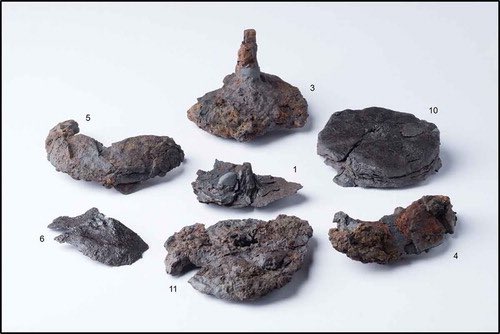 on the new paper by me, @rgsm84 @DrDerekHamilton Dr Eddie Rule & @johnswogger. Funded by @LivUni, @Go_CheshireWest, @HistoricEngland. What did these ‘lost’ iron objects tell us about the Iron Age? 1/ https://twitter.com/archaeolo..." title="Two solid years of work on understanding how hillfort gates worked! Here’s a https://abs.twimg.com/emoji/v2/... draggable="false" alt="🧵" title="Thread" aria-label="Emoji: Thread"> on the new paper by me, @rgsm84 @DrDerekHamilton Dr Eddie Rule & @johnswogger. Funded by @LivUni, @Go_CheshireWest, @HistoricEngland. What did these ‘lost’ iron objects tell us about the Iron Age? 1/ https://twitter.com/archaeolo..." class="img-responsive" style="max-width:100%;"/>
on the new paper by me, @rgsm84 @DrDerekHamilton Dr Eddie Rule & @johnswogger. Funded by @LivUni, @Go_CheshireWest, @HistoricEngland. What did these ‘lost’ iron objects tell us about the Iron Age? 1/ https://twitter.com/archaeolo..." title="Two solid years of work on understanding how hillfort gates worked! Here’s a https://abs.twimg.com/emoji/v2/... draggable="false" alt="🧵" title="Thread" aria-label="Emoji: Thread"> on the new paper by me, @rgsm84 @DrDerekHamilton Dr Eddie Rule & @johnswogger. Funded by @LivUni, @Go_CheshireWest, @HistoricEngland. What did these ‘lost’ iron objects tell us about the Iron Age? 1/ https://twitter.com/archaeolo..." class="img-responsive" style="max-width:100%;"/>
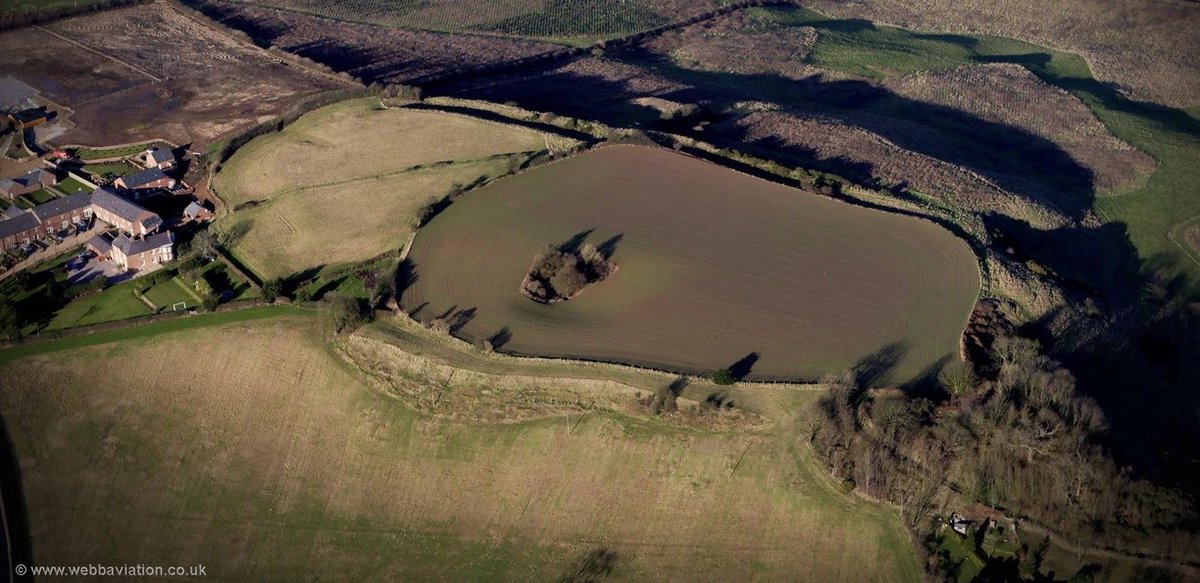 " title="In 1936-37, the iron objects were excavated by Bill Varley of @LivUni (who also excavated @OldOswestryFort). One of the iron mechanisms remained attached to its oak, entrance gate-post - that was still standing 3’ tall! Thought lost in WWII, @rgsm84 tracked the objects down https://abs.twimg.com/emoji/v2/... draggable="false" alt="🕵️♂️" title="Man detective" aria-label="Emoji: Man detective">">
" title="In 1936-37, the iron objects were excavated by Bill Varley of @LivUni (who also excavated @OldOswestryFort). One of the iron mechanisms remained attached to its oak, entrance gate-post - that was still standing 3’ tall! Thought lost in WWII, @rgsm84 tracked the objects down https://abs.twimg.com/emoji/v2/... draggable="false" alt="🕵️♂️" title="Man detective" aria-label="Emoji: Man detective">">
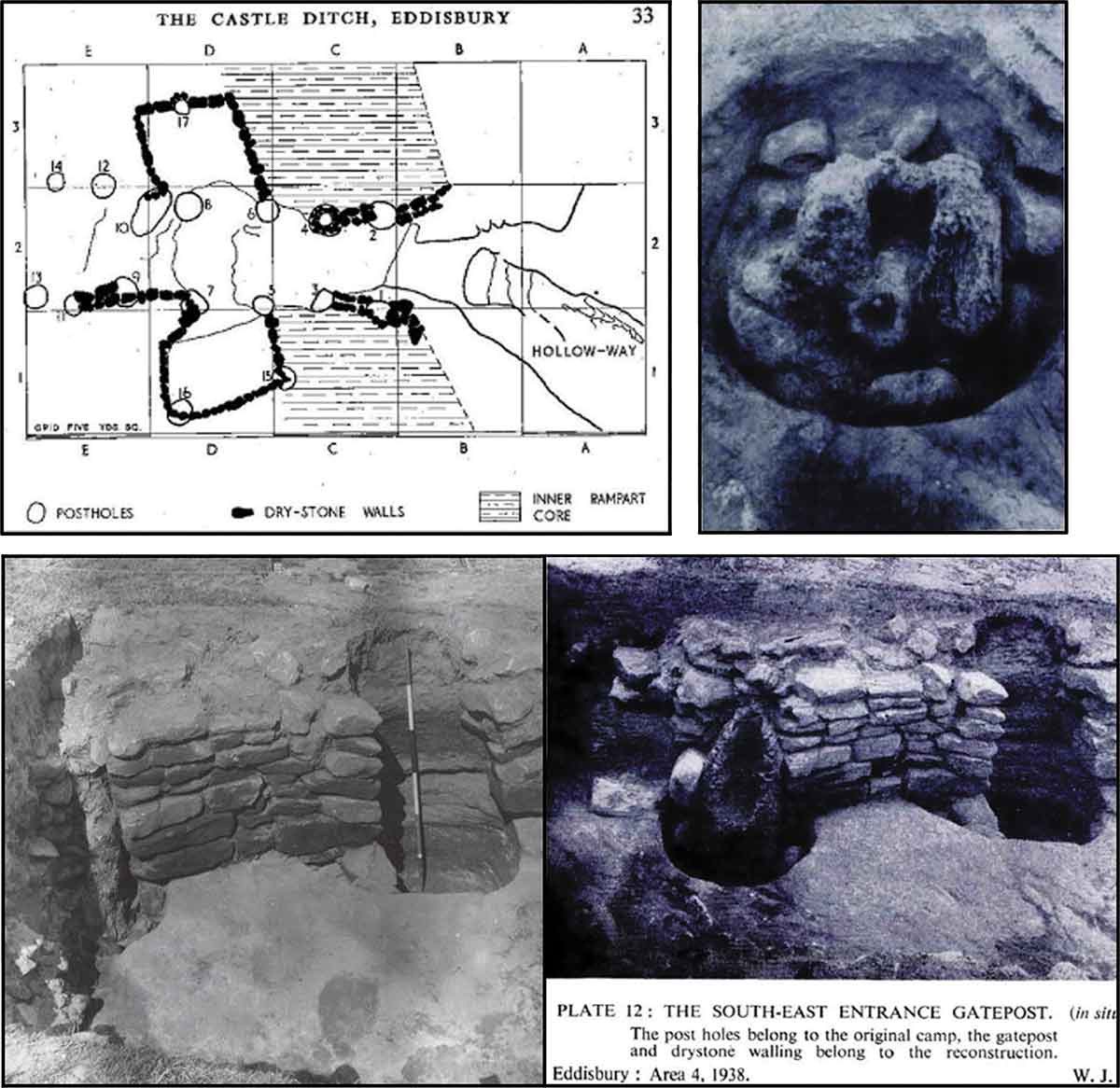 " title="In 1936-37, the iron objects were excavated by Bill Varley of @LivUni (who also excavated @OldOswestryFort). One of the iron mechanisms remained attached to its oak, entrance gate-post - that was still standing 3’ tall! Thought lost in WWII, @rgsm84 tracked the objects down https://abs.twimg.com/emoji/v2/... draggable="false" alt="🕵️♂️" title="Man detective" aria-label="Emoji: Man detective">">
" title="In 1936-37, the iron objects were excavated by Bill Varley of @LivUni (who also excavated @OldOswestryFort). One of the iron mechanisms remained attached to its oak, entrance gate-post - that was still standing 3’ tall! Thought lost in WWII, @rgsm84 tracked the objects down https://abs.twimg.com/emoji/v2/... draggable="false" alt="🕵️♂️" title="Man detective" aria-label="Emoji: Man detective">">
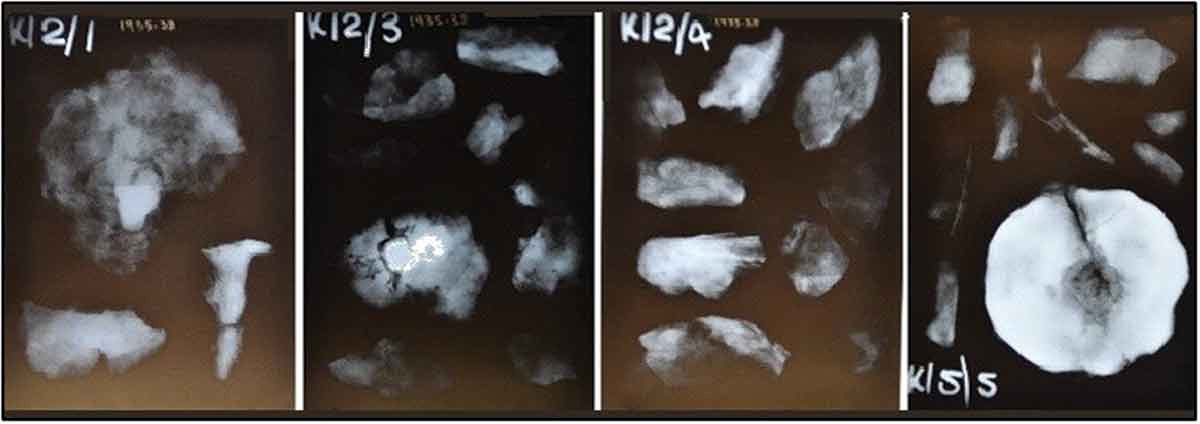 (for wood type, metal composition), illustrated them, undertook re-fitting, worked out their ‘types’, and how they functioned as mechanisms." title="The objects were in a fragile state - so we had them conserved, with the help of @HistoricEngland & Ian Panter (YAT). We analysed them https://abs.twimg.com/emoji/v2/... draggable="false" alt="🔬" title="Mikroskop" aria-label="Emoji: Mikroskop">(for wood type, metal composition), illustrated them, undertook re-fitting, worked out their ‘types’, and how they functioned as mechanisms.">
(for wood type, metal composition), illustrated them, undertook re-fitting, worked out their ‘types’, and how they functioned as mechanisms." title="The objects were in a fragile state - so we had them conserved, with the help of @HistoricEngland & Ian Panter (YAT). We analysed them https://abs.twimg.com/emoji/v2/... draggable="false" alt="🔬" title="Mikroskop" aria-label="Emoji: Mikroskop">(for wood type, metal composition), illustrated them, undertook re-fitting, worked out their ‘types’, and how they functioned as mechanisms.">
 (for wood type, metal composition), illustrated them, undertook re-fitting, worked out their ‘types’, and how they functioned as mechanisms." title="The objects were in a fragile state - so we had them conserved, with the help of @HistoricEngland & Ian Panter (YAT). We analysed them https://abs.twimg.com/emoji/v2/... draggable="false" alt="🔬" title="Mikroskop" aria-label="Emoji: Mikroskop">(for wood type, metal composition), illustrated them, undertook re-fitting, worked out their ‘types’, and how they functioned as mechanisms.">
(for wood type, metal composition), illustrated them, undertook re-fitting, worked out their ‘types’, and how they functioned as mechanisms." title="The objects were in a fragile state - so we had them conserved, with the help of @HistoricEngland & Ian Panter (YAT). We analysed them https://abs.twimg.com/emoji/v2/... draggable="false" alt="🔬" title="Mikroskop" aria-label="Emoji: Mikroskop">(for wood type, metal composition), illustrated them, undertook re-fitting, worked out their ‘types’, and how they functioned as mechanisms.">
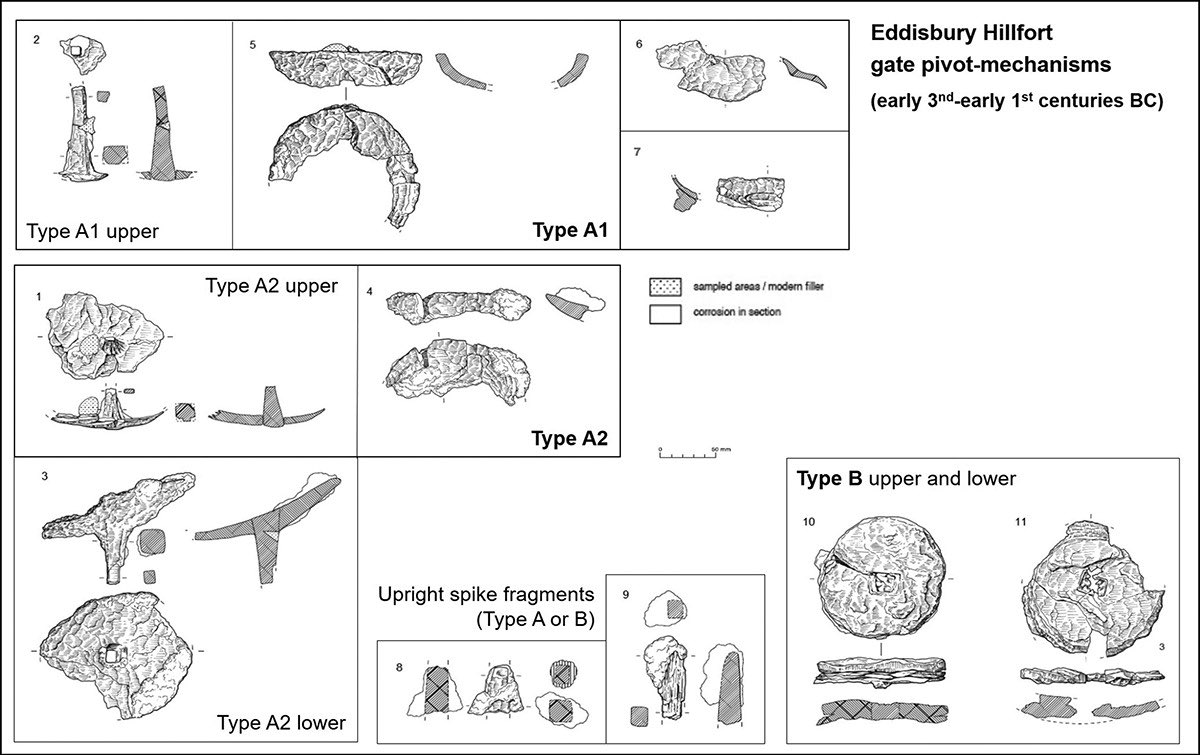 (for wood type, metal composition), illustrated them, undertook re-fitting, worked out their ‘types’, and how they functioned as mechanisms." title="The objects were in a fragile state - so we had them conserved, with the help of @HistoricEngland & Ian Panter (YAT). We analysed them https://abs.twimg.com/emoji/v2/... draggable="false" alt="🔬" title="Mikroskop" aria-label="Emoji: Mikroskop">(for wood type, metal composition), illustrated them, undertook re-fitting, worked out their ‘types’, and how they functioned as mechanisms.">
(for wood type, metal composition), illustrated them, undertook re-fitting, worked out their ‘types’, and how they functioned as mechanisms." title="The objects were in a fragile state - so we had them conserved, with the help of @HistoricEngland & Ian Panter (YAT). We analysed them https://abs.twimg.com/emoji/v2/... draggable="false" alt="🔬" title="Mikroskop" aria-label="Emoji: Mikroskop">(for wood type, metal composition), illustrated them, undertook re-fitting, worked out their ‘types’, and how they functioned as mechanisms.">
 (for wood type, metal composition), illustrated them, undertook re-fitting, worked out their ‘types’, and how they functioned as mechanisms." title="The objects were in a fragile state - so we had them conserved, with the help of @HistoricEngland & Ian Panter (YAT). We analysed them https://abs.twimg.com/emoji/v2/... draggable="false" alt="🔬" title="Mikroskop" aria-label="Emoji: Mikroskop">(for wood type, metal composition), illustrated them, undertook re-fitting, worked out their ‘types’, and how they functioned as mechanisms.">
(for wood type, metal composition), illustrated them, undertook re-fitting, worked out their ‘types’, and how they functioned as mechanisms." title="The objects were in a fragile state - so we had them conserved, with the help of @HistoricEngland & Ian Panter (YAT). We analysed them https://abs.twimg.com/emoji/v2/... draggable="false" alt="🔬" title="Mikroskop" aria-label="Emoji: Mikroskop">(for wood type, metal composition), illustrated them, undertook re-fitting, worked out their ‘types’, and how they functioned as mechanisms.">
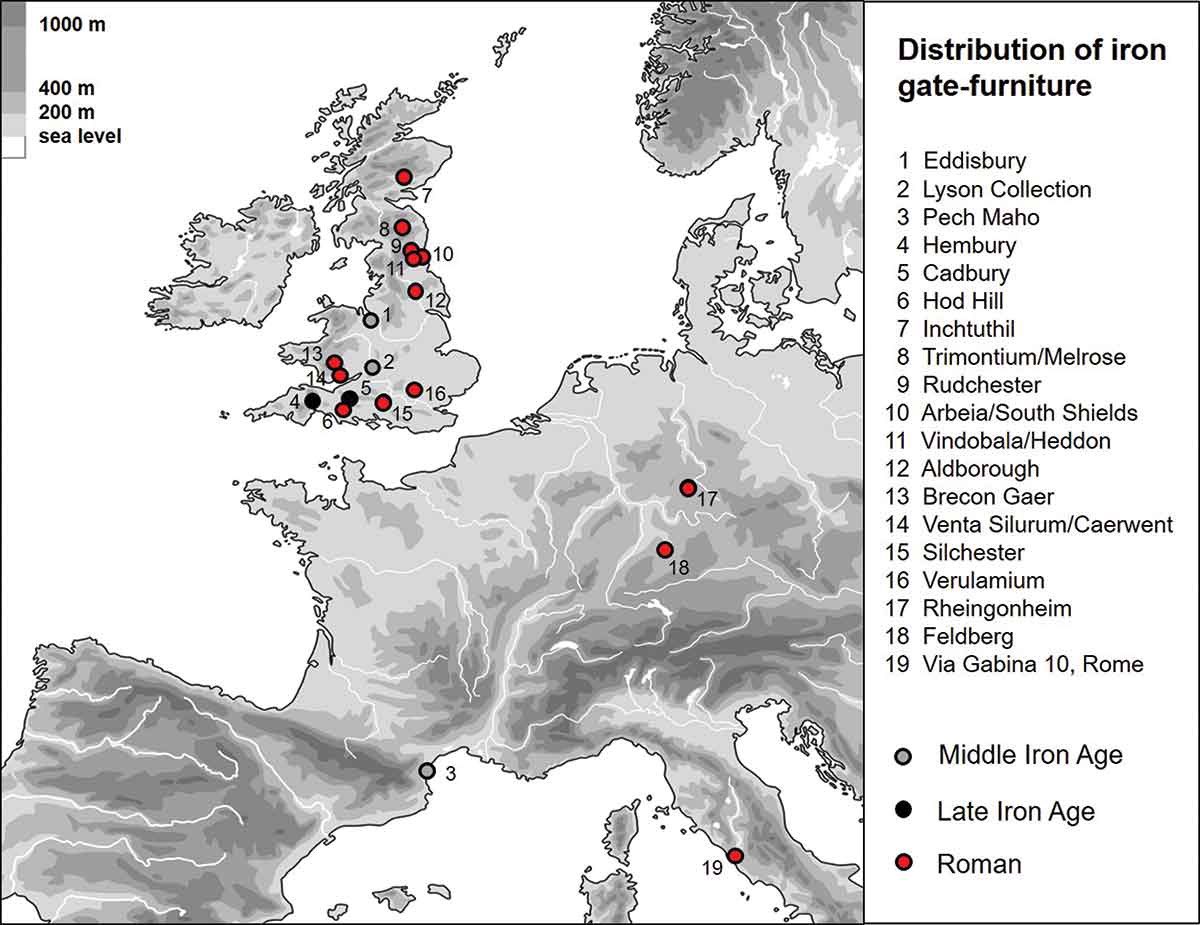 " title="Then we tracked down parallels. What we found, is that whilst the majority of excavated gate-mechanisms are Roman, the technology is an *Iron Age invention* - and designed for a much more *complex* engineering task at 400 BC than it was used for in the Roman period https://abs.twimg.com/emoji/v2/... draggable="false" alt="💥" title="Symbol für eine Kollision" aria-label="Emoji: Symbol für eine Kollision">" class="img-responsive" style="max-width:100%;"/>
" title="Then we tracked down parallels. What we found, is that whilst the majority of excavated gate-mechanisms are Roman, the technology is an *Iron Age invention* - and designed for a much more *complex* engineering task at 400 BC than it was used for in the Roman period https://abs.twimg.com/emoji/v2/... draggable="false" alt="💥" title="Symbol für eine Kollision" aria-label="Emoji: Symbol für eine Kollision">" class="img-responsive" style="max-width:100%;"/>
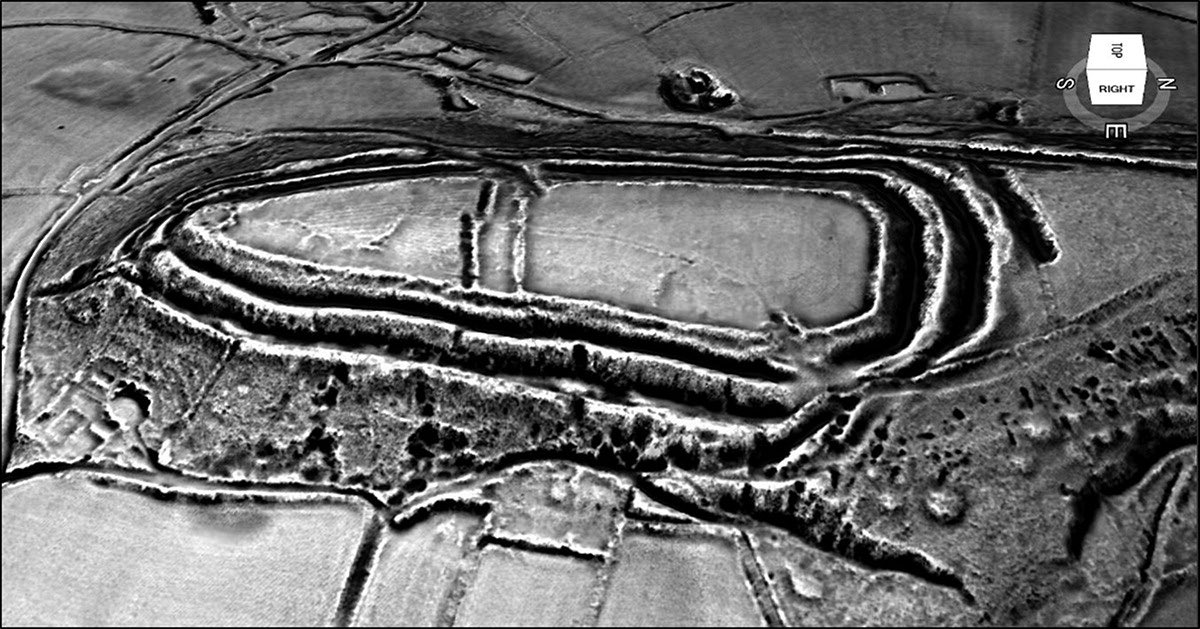

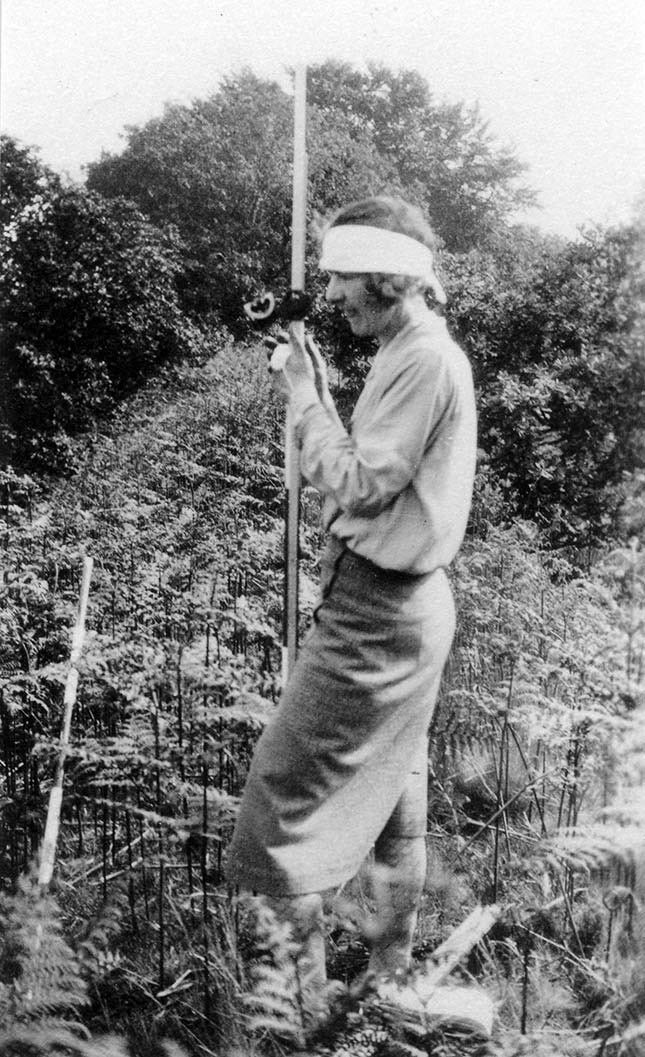 ) here: https://trowelblazers.com/dorothy-l... and there’s a fascinating photo archive of the 1930-35 Hembury excavations here: https://www.hemburyfort.co.uk/gallery.h..." title="You can find out more about pioneering archaeologist Dorothy Liddell from @Trowelblazers (https://abs.twimg.com/emoji/v2/... draggable="false" alt="❤️" title="Rotes Herz" aria-label="Emoji: Rotes Herz">) here: https://trowelblazers.com/dorothy-l... and there’s a fascinating photo archive of the 1930-35 Hembury excavations here: https://www.hemburyfort.co.uk/gallery.h...">
) here: https://trowelblazers.com/dorothy-l... and there’s a fascinating photo archive of the 1930-35 Hembury excavations here: https://www.hemburyfort.co.uk/gallery.h..." title="You can find out more about pioneering archaeologist Dorothy Liddell from @Trowelblazers (https://abs.twimg.com/emoji/v2/... draggable="false" alt="❤️" title="Rotes Herz" aria-label="Emoji: Rotes Herz">) here: https://trowelblazers.com/dorothy-l... and there’s a fascinating photo archive of the 1930-35 Hembury excavations here: https://www.hemburyfort.co.uk/gallery.h...">
 ) here: https://trowelblazers.com/dorothy-l... and there’s a fascinating photo archive of the 1930-35 Hembury excavations here: https://www.hemburyfort.co.uk/gallery.h..." title="You can find out more about pioneering archaeologist Dorothy Liddell from @Trowelblazers (https://abs.twimg.com/emoji/v2/... draggable="false" alt="❤️" title="Rotes Herz" aria-label="Emoji: Rotes Herz">) here: https://trowelblazers.com/dorothy-l... and there’s a fascinating photo archive of the 1930-35 Hembury excavations here: https://www.hemburyfort.co.uk/gallery.h...">
) here: https://trowelblazers.com/dorothy-l... and there’s a fascinating photo archive of the 1930-35 Hembury excavations here: https://www.hemburyfort.co.uk/gallery.h..." title="You can find out more about pioneering archaeologist Dorothy Liddell from @Trowelblazers (https://abs.twimg.com/emoji/v2/... draggable="false" alt="❤️" title="Rotes Herz" aria-label="Emoji: Rotes Herz">) here: https://trowelblazers.com/dorothy-l... and there’s a fascinating photo archive of the 1930-35 Hembury excavations here: https://www.hemburyfort.co.uk/gallery.h...">
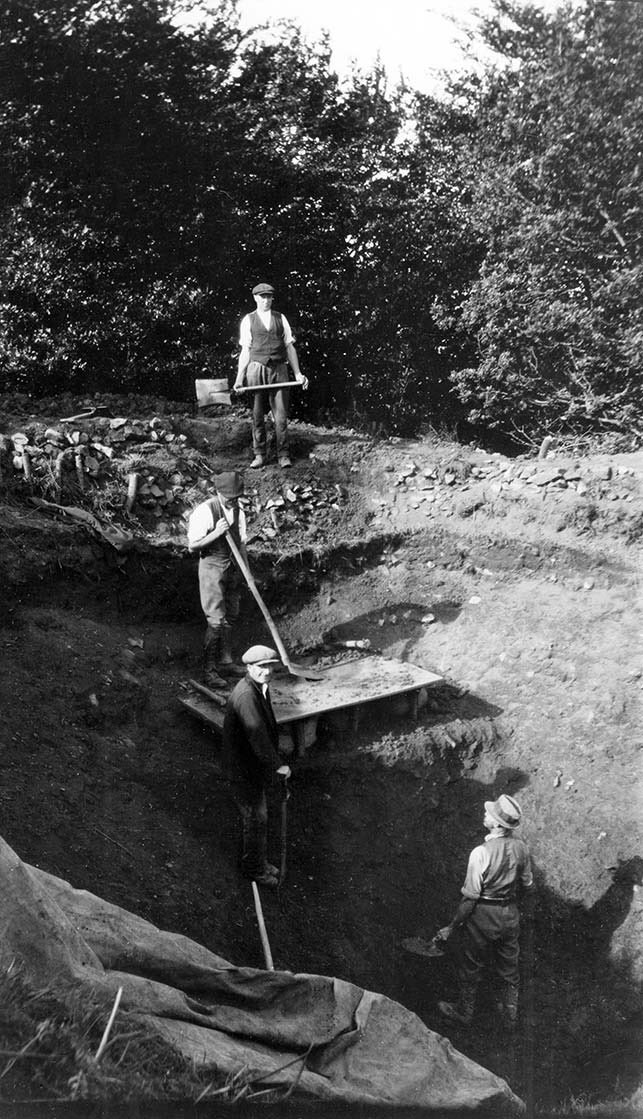 ) here: https://trowelblazers.com/dorothy-l... and there’s a fascinating photo archive of the 1930-35 Hembury excavations here: https://www.hemburyfort.co.uk/gallery.h..." title="You can find out more about pioneering archaeologist Dorothy Liddell from @Trowelblazers (https://abs.twimg.com/emoji/v2/... draggable="false" alt="❤️" title="Rotes Herz" aria-label="Emoji: Rotes Herz">) here: https://trowelblazers.com/dorothy-l... and there’s a fascinating photo archive of the 1930-35 Hembury excavations here: https://www.hemburyfort.co.uk/gallery.h...">
) here: https://trowelblazers.com/dorothy-l... and there’s a fascinating photo archive of the 1930-35 Hembury excavations here: https://www.hemburyfort.co.uk/gallery.h..." title="You can find out more about pioneering archaeologist Dorothy Liddell from @Trowelblazers (https://abs.twimg.com/emoji/v2/... draggable="false" alt="❤️" title="Rotes Herz" aria-label="Emoji: Rotes Herz">) here: https://trowelblazers.com/dorothy-l... and there’s a fascinating photo archive of the 1930-35 Hembury excavations here: https://www.hemburyfort.co.uk/gallery.h...">
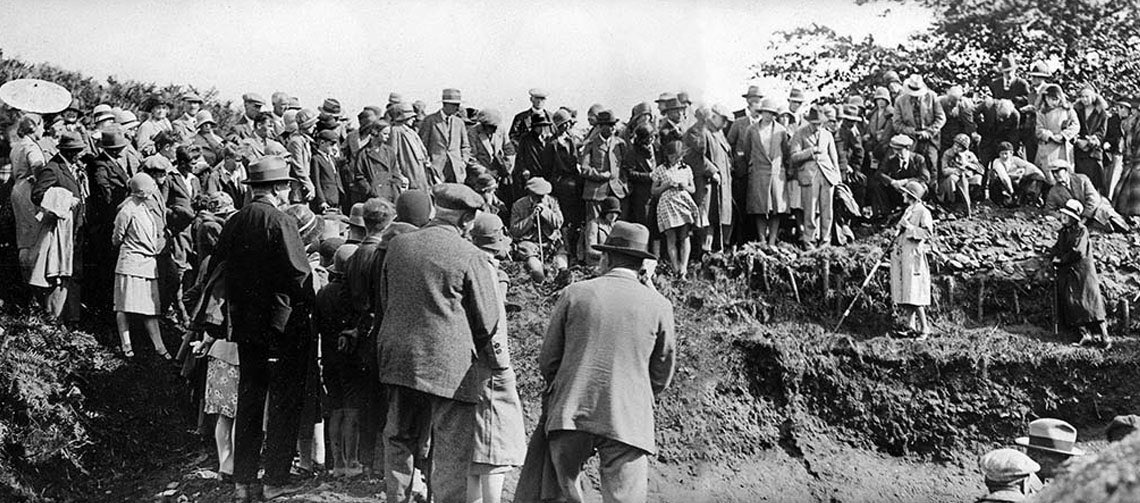 ) here: https://trowelblazers.com/dorothy-l... and there’s a fascinating photo archive of the 1930-35 Hembury excavations here: https://www.hemburyfort.co.uk/gallery.h..." title="You can find out more about pioneering archaeologist Dorothy Liddell from @Trowelblazers (https://abs.twimg.com/emoji/v2/... draggable="false" alt="❤️" title="Rotes Herz" aria-label="Emoji: Rotes Herz">) here: https://trowelblazers.com/dorothy-l... and there’s a fascinating photo archive of the 1930-35 Hembury excavations here: https://www.hemburyfort.co.uk/gallery.h...">
) here: https://trowelblazers.com/dorothy-l... and there’s a fascinating photo archive of the 1930-35 Hembury excavations here: https://www.hemburyfort.co.uk/gallery.h..." title="You can find out more about pioneering archaeologist Dorothy Liddell from @Trowelblazers (https://abs.twimg.com/emoji/v2/... draggable="false" alt="❤️" title="Rotes Herz" aria-label="Emoji: Rotes Herz">) here: https://trowelblazers.com/dorothy-l... and there’s a fascinating photo archive of the 1930-35 Hembury excavations here: https://www.hemburyfort.co.uk/gallery.h...">



 " title="Another strand was bringing in @DrDerekHamilton, and his Bayesian modelling skills, on Eddusbury’s new radiocarbon dates. Via this process, we’ve C-14 dated (for the first time) the phenomenon of ‘Developed Hillforts’ (when some triple in size) to 400 BC. Confirming Cunliffe https://abs.twimg.com/emoji/v2/... draggable="false" alt="👍🏽" title="Thumbs up (mittlerer Hautton)" aria-label="Emoji: Thumbs up (mittlerer Hautton)">" class="img-responsive" style="max-width:100%;"/>
" title="Another strand was bringing in @DrDerekHamilton, and his Bayesian modelling skills, on Eddusbury’s new radiocarbon dates. Via this process, we’ve C-14 dated (for the first time) the phenomenon of ‘Developed Hillforts’ (when some triple in size) to 400 BC. Confirming Cunliffe https://abs.twimg.com/emoji/v2/... draggable="false" alt="👍🏽" title="Thumbs up (mittlerer Hautton)" aria-label="Emoji: Thumbs up (mittlerer Hautton)">" class="img-responsive" style="max-width:100%;"/>
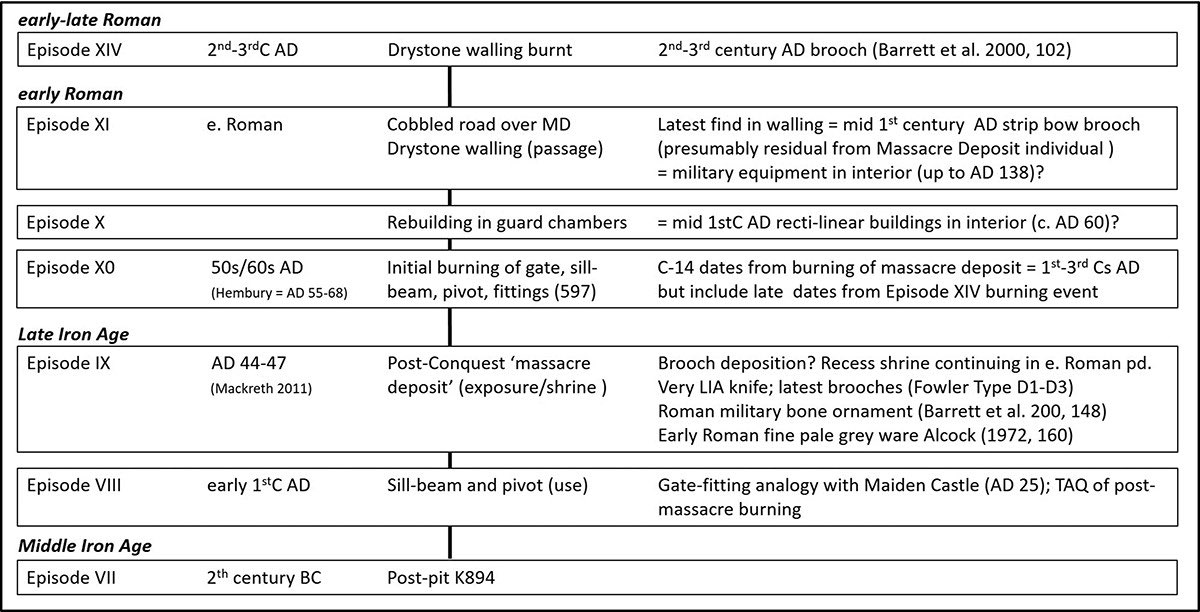
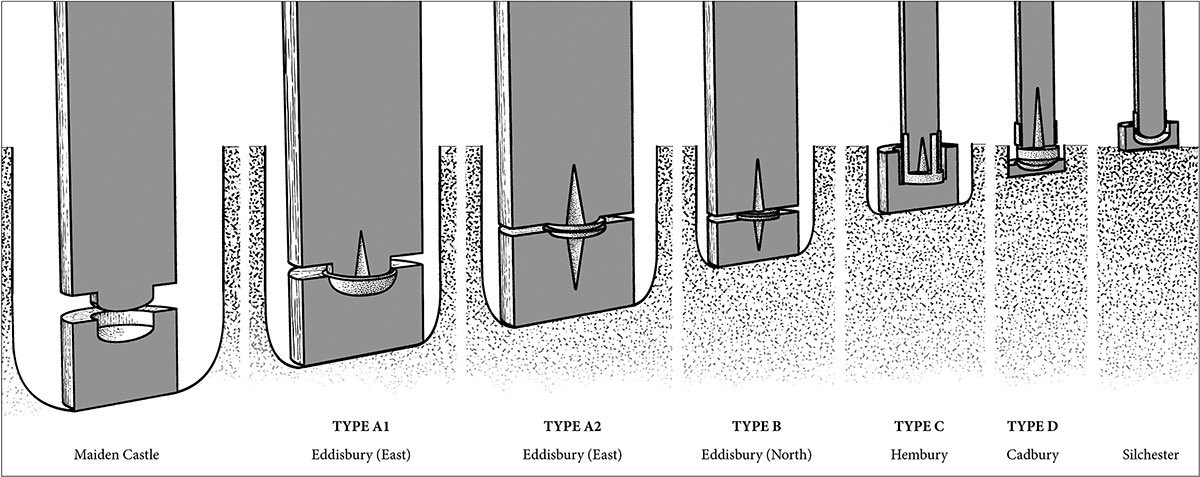 than the later (LIA-Roman) technology around using of ash gates." title="By working with the parallels, we’ve built the first typology of prehistoric gate-mechanisms (3rdC BC-Roman) - showing how the Middle Iron Age engineering task around manoeuvring big oak gates was far greater https://abs.twimg.com/emoji/v2/... draggable="false" alt="💪🏼" title="Angespannter Bizeps (mittelheller Hautton)" aria-label="Emoji: Angespannter Bizeps (mittelheller Hautton)"> than the later (LIA-Roman) technology around using of ash gates.">
than the later (LIA-Roman) technology around using of ash gates." title="By working with the parallels, we’ve built the first typology of prehistoric gate-mechanisms (3rdC BC-Roman) - showing how the Middle Iron Age engineering task around manoeuvring big oak gates was far greater https://abs.twimg.com/emoji/v2/... draggable="false" alt="💪🏼" title="Angespannter Bizeps (mittelheller Hautton)" aria-label="Emoji: Angespannter Bizeps (mittelheller Hautton)"> than the later (LIA-Roman) technology around using of ash gates.">
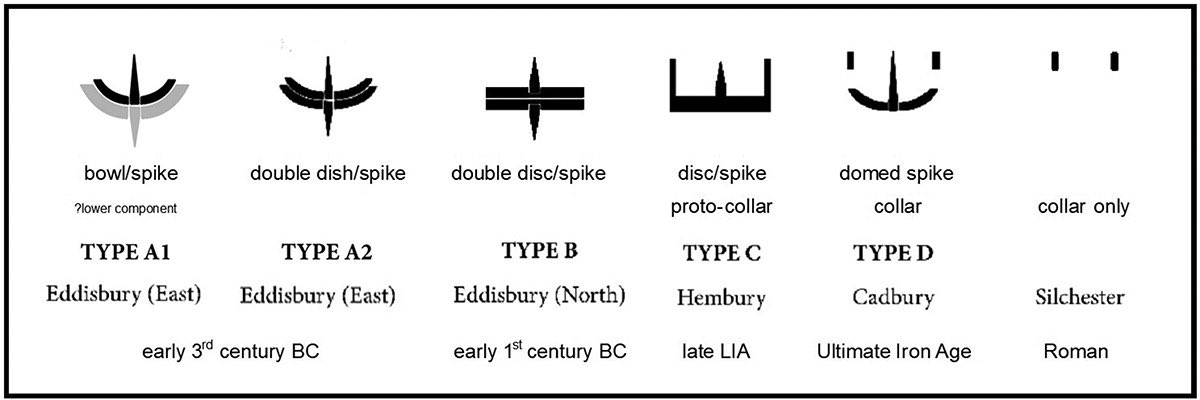 than the later (LIA-Roman) technology around using of ash gates." title="By working with the parallels, we’ve built the first typology of prehistoric gate-mechanisms (3rdC BC-Roman) - showing how the Middle Iron Age engineering task around manoeuvring big oak gates was far greater https://abs.twimg.com/emoji/v2/... draggable="false" alt="💪🏼" title="Angespannter Bizeps (mittelheller Hautton)" aria-label="Emoji: Angespannter Bizeps (mittelheller Hautton)"> than the later (LIA-Roman) technology around using of ash gates.">
than the later (LIA-Roman) technology around using of ash gates." title="By working with the parallels, we’ve built the first typology of prehistoric gate-mechanisms (3rdC BC-Roman) - showing how the Middle Iron Age engineering task around manoeuvring big oak gates was far greater https://abs.twimg.com/emoji/v2/... draggable="false" alt="💪🏼" title="Angespannter Bizeps (mittelheller Hautton)" aria-label="Emoji: Angespannter Bizeps (mittelheller Hautton)"> than the later (LIA-Roman) technology around using of ash gates.">




 You can also find out more about the @LivUni excavations at Eddisbury hillfort, and @rgsm84’s work on the Varley archive, in this book (pending our monograph):" title="We learned lots more besides, so if you’d like to find out more - read the paper! It’s #OpenAccess so it’s yours now https://abs.twimg.com/emoji/v2/... draggable="false" alt="🎁" title="Verpacktes Geschenk" aria-label="Emoji: Verpacktes Geschenk"> You can also find out more about the @LivUni excavations at Eddisbury hillfort, and @rgsm84’s work on the Varley archive, in this book (pending our monograph):">
You can also find out more about the @LivUni excavations at Eddisbury hillfort, and @rgsm84’s work on the Varley archive, in this book (pending our monograph):" title="We learned lots more besides, so if you’d like to find out more - read the paper! It’s #OpenAccess so it’s yours now https://abs.twimg.com/emoji/v2/... draggable="false" alt="🎁" title="Verpacktes Geschenk" aria-label="Emoji: Verpacktes Geschenk"> You can also find out more about the @LivUni excavations at Eddisbury hillfort, and @rgsm84’s work on the Varley archive, in this book (pending our monograph):">
 You can also find out more about the @LivUni excavations at Eddisbury hillfort, and @rgsm84’s work on the Varley archive, in this book (pending our monograph):" title="We learned lots more besides, so if you’d like to find out more - read the paper! It’s #OpenAccess so it’s yours now https://abs.twimg.com/emoji/v2/... draggable="false" alt="🎁" title="Verpacktes Geschenk" aria-label="Emoji: Verpacktes Geschenk"> You can also find out more about the @LivUni excavations at Eddisbury hillfort, and @rgsm84’s work on the Varley archive, in this book (pending our monograph):">
You can also find out more about the @LivUni excavations at Eddisbury hillfort, and @rgsm84’s work on the Varley archive, in this book (pending our monograph):" title="We learned lots more besides, so if you’d like to find out more - read the paper! It’s #OpenAccess so it’s yours now https://abs.twimg.com/emoji/v2/... draggable="false" alt="🎁" title="Verpacktes Geschenk" aria-label="Emoji: Verpacktes Geschenk"> You can also find out more about the @LivUni excavations at Eddisbury hillfort, and @rgsm84’s work on the Varley archive, in this book (pending our monograph):">


